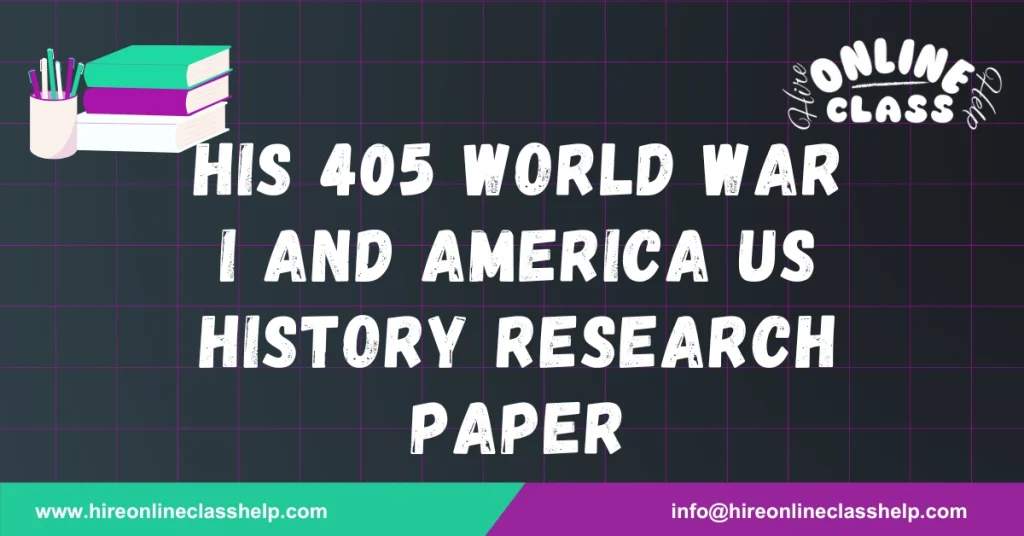






Name
Chamberlain University
HIS-405 US History
Prof. Name
Date
While the assassination of Archduke Francis Ferdinand in Sarajevo is frequently cited as the spark that ignited World War I, numerous underlying factors had been brewing long before 1914. Key contributors included the Boxer Rebellion, the rise of militarism and imperialism, intricate alliances, American neutrality, and the impact of ethnic tensions and Pan-Slavism in Eastern Europe. Notably, the formation of the League of Nations and the signing of the Treaty of Versailles also played pivotal roles in shaping the path to war.
The Boxer Rebellion was a significant precursor to World War I. This anti-foreign uprising, led by the secret society known as the Society of the Righteous and Harmonious, erupted in response to Western and Japanese encroachment in northern China. The name “Boxers” derived from their belief that physical exercises would render them invulnerable to bullets. The conflict escalated to Beijing, resulting in the deaths and displacement of numerous Chinese Christians. In response, an international coalition—including the United States—intervened to rescue foreign nationals and those caught in the violence (History on the Net, 2016).
Militarism—an ideology advocating for a powerful military prepared for aggressive action—pervaded Europe in the early 1900s. Nations expanded their military capabilities and granted increased authority to armed forces in both domestic and international affairs. The introduction of the Dreadnought battleship by Britain and Germany’s strategic plans to invade France through Belgium exemplified this militaristic trend.
At the same time, imperialism—extending a nation’s power through military or political means—was rampant. The British Empire extended across five continents, while France controlled vast territories in Africa. European powers raced to annex undeveloped nations to secure raw materials and markets, with German leaders particularly eager to carve out a presence in Africa at the expense of existing colonies.
World War I was significantly fueled by two distinct forms of nationalism. The first type involved nations exercising power to serve their own political interests, illustrated by the long-standing dispute over the Alsace-Lorraine region between France and Germany. The second form of nationalism arose in ethnically diverse regions, particularly in Central and Eastern Europe, where various ethnic groups sought autonomy and territorial control.
Pan-Slavism emerged as a potent force aiming to unify Slavic peoples under a single national identity, posing a direct threat to the Austro-Hungarian Empire. Serbia, viewed as an aggressor nation, was led by figures such as Nicholas Pasic, which heightened tensions with Austria-Hungary. The complex alliance system further complicated the situation, as countries were often compelled to declare war in defense of their allies. Germany and Austria-Hungary were bound by a treaty, as were France and Russia, with a less formal understanding between France and Great Britain.
In the 1930s, despite President Roosevelt’s calls for greater engagement, the United States largely adhered to a policy of isolationism. The Hawley-Smoot Tariff was enacted to protect American industries, prompting retaliatory tariffs from other nations. This led to a series of neutrality acts, including restrictions on arms sales and financial loans to warring countries, allowing trade only on a cash-and-carry basis.
Within the United States, immigrant communities generally exhibited loyalty to their new homeland, often prioritizing American interests over neutrality. Many had fled their countries due to grievances, resulting in minimal opposition to entering the war. Although some German-Americans were reluctant to oppose their homeland, immigrant groups ultimately rallied to serve in the U.S. armed forces when called upon.
The pivotal moment came in 1917 when German U-boats began attacking American shipping vessels, resulting in the loss of American lives. Germany had previously pledged to refrain from attacking passenger ships and to allow crews to abandon merchant vessels before engaging. However, this Sussex pledge was disregarded due to U.S. financial support for the Allies. Despite German Chancellor’s objections to the attacks, Germany no longer viewed the U.S. as a neutral entity.
President Wilson, choosing not to seek a formal declaration of war from Congress, severed diplomatic ties with Germany. He aimed to maintain the option of negotiation should hostilities cease, yet U-boat attacks continued unabated, leading to further American casualties.
In 1919, the Paris Peace Conference convened at Versailles to establish a post-war order. While thirty nations attended, the conference was dominated by the “Big Four”: the United States, France, Great Britain, and Italy. They played a crucial role in formulating the Treaty of Versailles, which officially ended the war and established the League of Nations as an international diplomatic body.
The treaty imposed harsh penalties on Germany, including the acceptance of full responsibility for the war through Article 231, known as the War Guilt Clause. This clause bred resentment among Germans and instigated a sense of humiliation. The treaty also limited Germany’s military capabilities and prohibited it from maintaining a U-boat fleet. Ultimately, the U.S. Senate rejected ratification of the treaty, refusing to accept responsibility for its stipulations.
Exploring the myriad causes of World War I has deepened my appreciation for the complexities of American history, particularly during pivotal moments like the Great Wars. The sacrifices of military leaders and the struggle for freedom shaped our nation’s trajectory, underscoring the importance of understanding these historical events as we navigate our present and future.